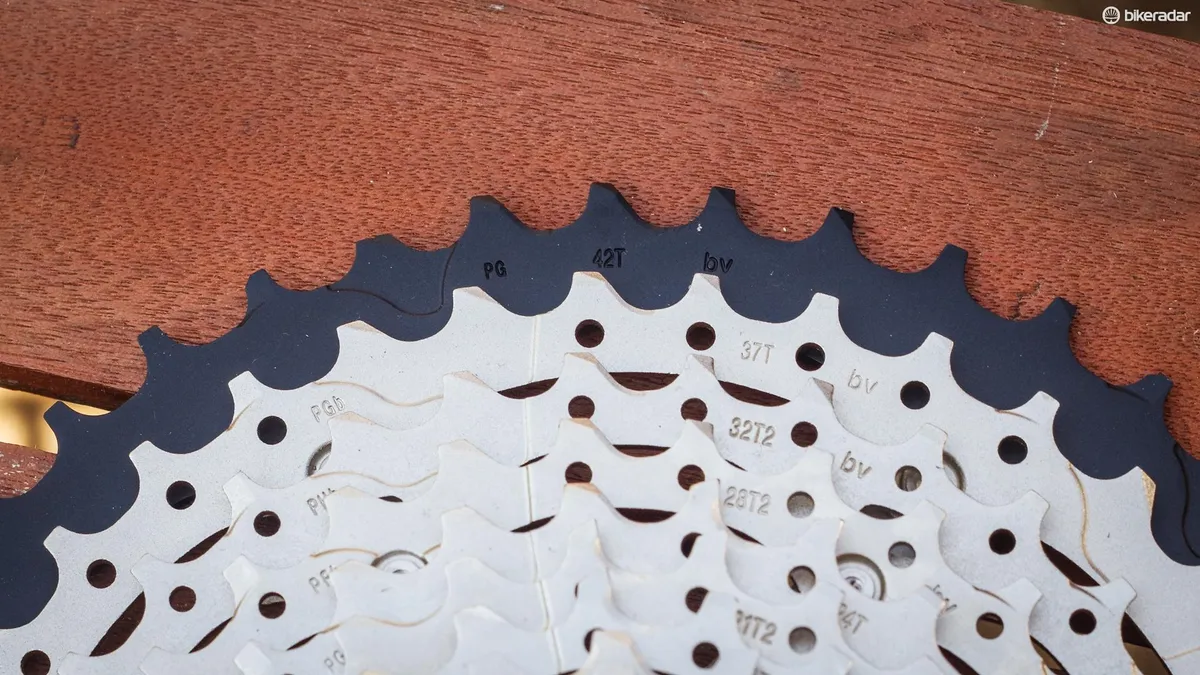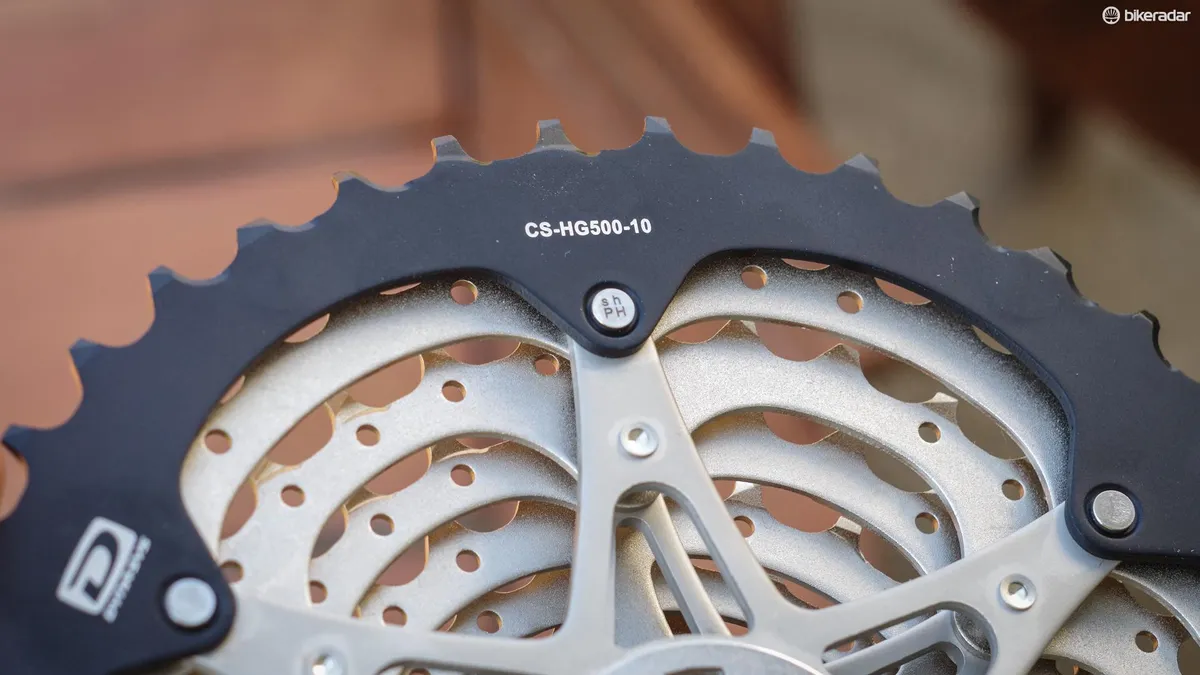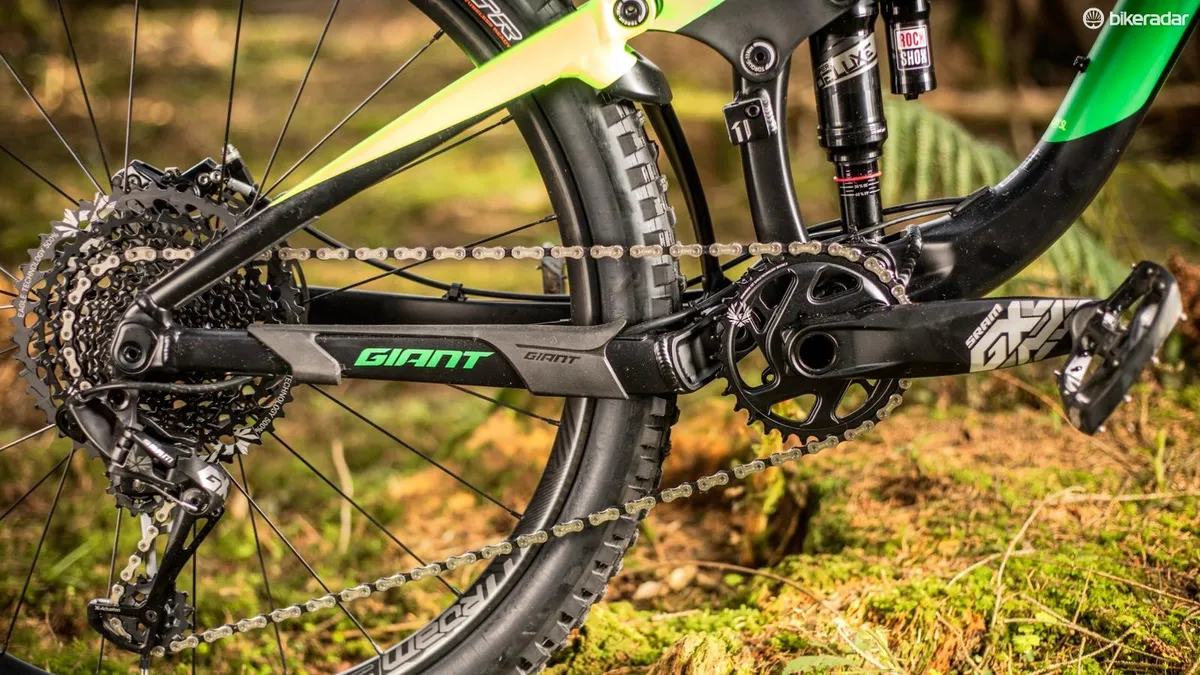Last year Shimano released a 10-speed cassette with a huge 11-42t range as part of the updated Deore M6000 groupset. The latest CS-HG500-10 (which already existed in three less exciting ratios) fits standard HG-style freehubs and, as well as working with current Deore components, it's ideal for 1× conversions. It’s also a relatively affordable way to get some seriously low gears on your older bike.
- Shimano's new Deore M6000 group looks impressively refined
- Buyer's guide to MTB groupsets
- How to convert your bike to a 1x drivetrain
10 mighty cogs

The HG500 11-42t cassette weighs 424g on our scales and has 11, 13, 15, 18, 21, 24, 28, 32, 37, and 42t sprockets. The largest is alloy while the rest are steel, and the riveted-together carrier is steel too, with built-in plastic spacers and plenty of holes for lightness.

Its size aside, it’s like any other Shimano cassette and it fits standard HG-style 9/10/11-speed freehubs.The cassette retails at £50 / $65 but like all Shimano components it’s routinely available at a hefty discount.
- Buy the Shimano HG500 11-42t cassette now from Chain Reaction Cycles / Jenson USA
It should be noted that Shimano isn’t the first brand to release a wide-range 10-speed cassette. Sunrace does a few including the reasonably affordable CSMS3, which weighs a claimed 488g for an 11-42t. The brand also does 11-46t variants.

Praxis offers this rather spendy 11-40t option which claims a feathery 322g mass. For added context, the HG500’s weight puts it somewhere between SRAM’s PG-1130 and XG-1150 11-speed cassettes, which come in at a claimed 538g and 394g respectively.
Why this 10-speed cassette matters
The new HG500 cassette gives you an affordable, ready-made option for a good range of gears on 10-speed 1× conversions.
1× drivetrains are now dominant because they’re inherently simpler and easier to live with than doubles or triples. (Yes, I know some of you still love your front derailleurs, vive la différence...)

When they first became popular, SRAM was at the forefront of development and even went so far as to publish a video eulogy to the front derailleur.
The focus was on 11-speed (and subsequently 12-speed) however, and with SRAM’s move to the XD driver which allows the use of a tiny 10t cog, there was no backwards compatibility; for many riders, upgrading meant forking out for new wheels as well as a groupset.
Shimano, on the other hand, was slow to embrace 1× and didn’t commit to it fully until the launch of the 11-speed XTR M9000 groupset in 2014.
In the meantime, aftermarket solutions for 10-speeders such as cassette ratio expanders, which replace one or more sprockets to offer more range — see here for an example — proliferated.
The other option was simply to fit a tiny chainring (30t or smaller) but of course doing so loses you the top end, which can be frustrating for riders who like to go downhill quickly.
It’s unlikely that Shimano made its new cassette for altruistic reasons; there’s doubtless a demand from bike manufacturers for 1×-friendly kit to equip their entry-level models.Nevertheless, it’s gratifying when a brand does something that directly helps with backwards compatibility, something the bike industry at times neglects.
What’s the catch?
There probably isn’t one, but when 10-speed groupsets ruled the roost, a 36t cog was the biggest you’d normally come across. As a result, older 10-speed derailleurs aren’t usually officially approved for use with a 42t cassette.
Having said that, manufacturers have historically been quite conservative with their specs, and you can often get away with a larger sprocket by winding the B-screw all the way in (which increases clearance) or potentially even replacing it with a longer screw.
Don’t forget that fitting a much larger cassette may also necessitate a longer chain, although for conversions that will also depend on what size chainring you’re fitting.
Have you got a bike that’s crying out for Shimano’s biggest 10-speed cassette? Are you running one already? Let us know in the comments below.

